Aircraft carriers were heavily involved in the war against Japan. At this point, no one knew when it would end. Although the Japanese war effort was weakening, they were prepared to fight to the “last man, woman and child”.
As had happened throughout the war years, the area was hit with more heavy snowstorms. The regular dance at the Gananoque Airport was scheduled for January 24 and the young ladies waited at the Armed Forces Club for the airport bus which arrived over an hour late. Being true Canadians, it didn’t dampen their enthusiasm and, as it turned out, it was just as well. The bus became bogged down as it turned off highway 32 onto the township road in the heavy snow left by the snowplow and they had to get out to help the few airmen push. Most of the F.A.A. had turned in thinking the dance would be cancelled, but an airman was sent to rouse them. Among the pupils was the group which arrived from the elementary flying training school in St. Eugene, Quebec, due to the station in Kingston being under quarantine after an outbreak of scarlet fever. A total of four courses in January and February were quarantined.
Photo of a group from that course.
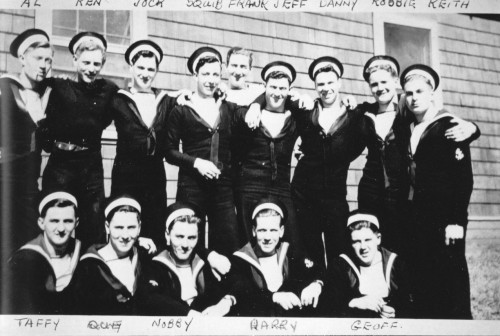
Nineteen members of the Royal Navy, including one Canadian and one member of the R.C.N.V.R., received their wings on February 18. They were:
Lieuts. G. Gordon, Edmonton; A. M. Blenkinsop, Leamington Spa and P. L. Lubbock, Hertfordshire.
Others graduating were: Midshipman B. G. Nash, Buckinghamshire, and A/POs P. J. Busby, Birmingham; D. J. Davis, Birmingham; J. Ellis, Yorkshire; W. H. Gove, Devon; J. O. Griffin, Kent; V. W. Kairis, Essex; J. M. Lamon, Toronto; E. Payne, Manchester; J. R. Pope, Bedfordshire; J. L. Prendy, Middlesex; I. Roberts, Worcestershire; *E. S. Smith, Surrey; A. P. Taylor, Lancashire; G. W. Tearle, Middlesex; R. Williams, N. Wales; J. Wilson, Scotland. (*see In Memoriam}
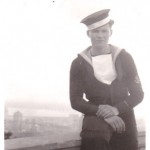
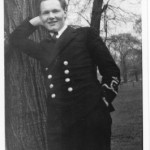
Photos of Bill Gove, Devon, before graduation and after in London, Eng. He served on Malta in the R.N. and retired to Bermuda.
On April 21, 1945, forty-six F.A.A. and two airmen graduated. The only Canadian was Acting Petty Officer D. A. S. Brooks of Welland.
Victory Loan Parade No. 8
Canada’s eighth Victory Loan Drive opened on April 23 with the government seeking $1,350,000,000.00 in the three-week campaign. A parade was planned for Sunday, April 29 in Kingston. The Whig-Standard reported:
“Those who line the route as spectators are asked to show some enthusiasm and to applaud as the various units pass. In past Victory Loan parades, most people have stood stonily as the parade moved along and showed little or no enthusiasm….This time all spectators are asked to applaud or cheer, particularly the veterans of this and every other war. A hand for the visiting American soldiers is suggested. It is hoped by those in charge of the arrangements of the parade that citizens watching the parade will not be too self-conscious and will unbend a little to add to the success of the parade and the cause for which it is held.”
One cannot help but be impressed, nothing like it has been seen since. A formation of planes circled the city while the parade was in progress. Units participating included a naval detachment from H.M.C.S. Cataraqui; members of the F.A.A. and R.C.A.F. from No. 14 S.F.T.S.; approximately twelve Army units, along with approximately fifty signallers from Pine Camp, Watertown, and three out-of-town bands: the bands of H.M.C.S. York, Toronto, R.C.A.F. Station Trenton and the pipe band of the Cameron Highlanders of Ottawa. Local Army bands also participated.
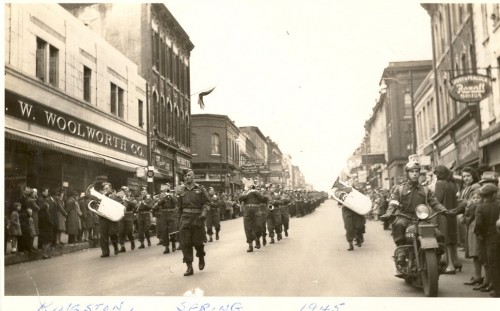
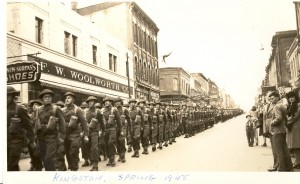
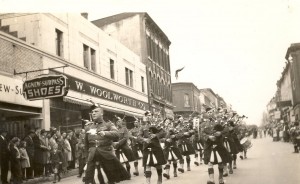
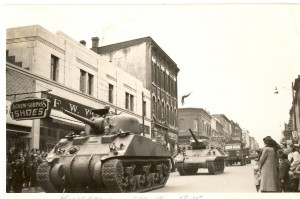
Fleet Air Arm pupils marched proudly in the parade as others flew in Harvards overhead. The men shown here are from the course that arrived at Gan Airport in January 1945.
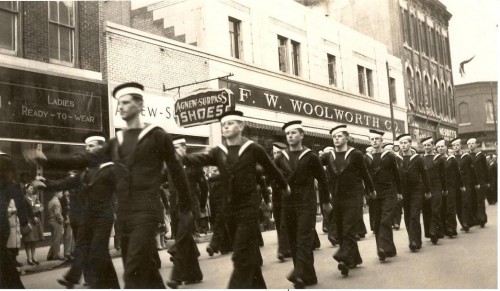
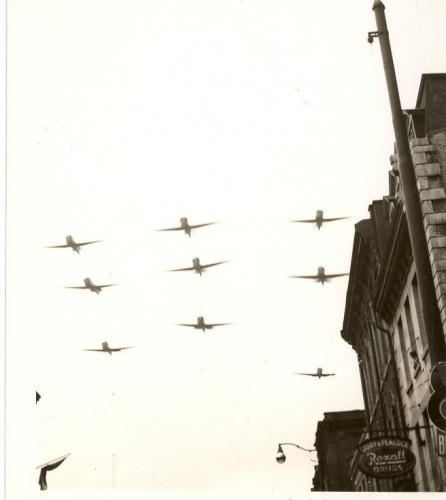
Next Chapter: 28. The Contribution of the Fleet Air Arm to the Winning of the War
Previous Chapter: 26. Training of Pilots for a Canadian Fleet Air Arm